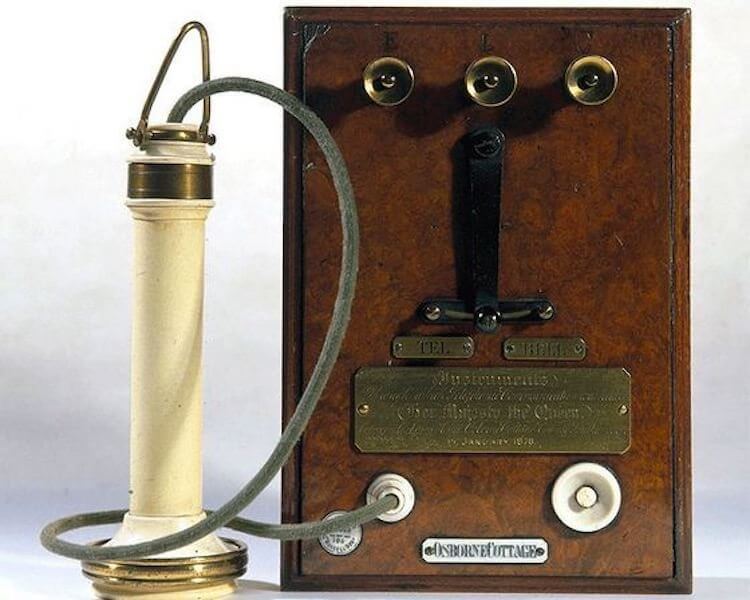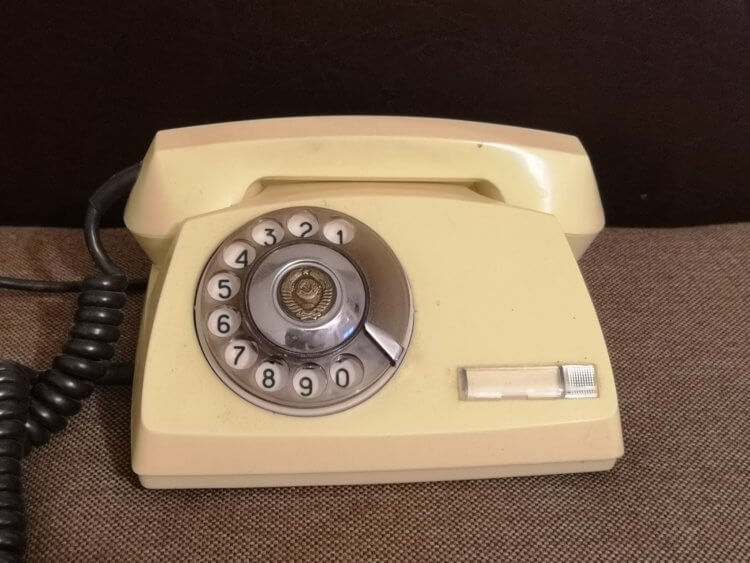Have you ever wondered what kind of magic happens at the moment when you poke into a contact from your address book and wait for a response from the caller? The process is much more complicated than it seems, and before it was even more interesting when the codes had to be entered manually one digit at a time, or even generally say: “Miss, connect …”. In those days, everything was different. Now digital technologies and automation have made many processes much easier, but they have killed a certain amount of romance in some processes in our lives. In this article I will tell you how the dialing in the “+ 7-926 …” format differs from the dialing in the “8-926…” format and some other interesting facts about telephone switching.

You can also call a payphone, the main thing is to know its inventory number.
Who Invented the Telephone?
When the first telephone appeared, it was not designed for voice transmission at all. Alexander Bell, who was considered the inventor of the telephone, tried to invent a device he called the harmonic telegraph. True, in the process of work it turned out that the device can accurately transmit sounds. And in this way it made it possible to convey a voice. The negative point was that due to imperfect technologies, the transmission was carried out only at a distance of no more than 500 meters. For some tasks this was enough, but for mass use it was still necessary to work with this system.
As a result, in 1876 Bell applied for a patent for a device called a “talking telegraph”. There was only one tube and it simultaneously transmitted and received a signal. There was no bell either, and the whistle served as the call signal. The bell itself was invented a little later in 1878 by Bell's colleague, T. Watson.

The first phones looked like this.
In 2002, the US Congress in Resolution No. 269 recognized that the telephone was not invented by Bell, but by the Italian naturalist Antonio Meucci. It cannot be said that he completely invented the telephone, but it was he who, back in 1860, that is, 16 years before the discovery of Alexander Bell, published an article in which he spoke in detail about a device capable of transmitting sounds through electrical wires. Thus, although he did not demonstrate, unlike Bell, an industrial design of his invention, he was the one who told how it should work.
How the phone works
There is no need to say that complex telephone exchanges were needed in the first samples. The very first representatives of this type of communication generally worked only on the principle of direct connection. That is, it was necessary to stretch a wire from the caller to the one to whom he is calling. Of course, such an idea had no future as a mass phenomenon, although it is still used today. For example, as a means of secret communication, when the signal must never be intercepted. Direct communication in this case is the best solution.
In order to be able to connect subscribers within the city, then in different cities, and with the development of networks at the international level, telephone exchanges were created. That is, a person contacted such a station and a telephone operator (usually a telephone operator) connected him with the desired subscriber. The process was complex, unreliable, and required a large number of people to sit and literally physically connect one wire to the other.

Don't say it, it was hard work.
That is why, with the advent of more modern technologies, this method of connection was replaced by a simpler method of automatic telephone exchanges. At the beginning, automatic telephone exchanges were the simplest and did not always work stably, having a large number of relays and other auxiliary elements. In our time, they have almost completely switched to digital standards.
An example of PBX operation, which could be felt by everyone who picked up the phone in order to call someone, was a dial tone. That very long beep, which meant that the PBX was ready to receive command signals. At this moment, the subscriber could start dialing codes, to which we will return, and the number itself.
Automatic telephone exchanges are machine, decade-step, coordinate, quasi-electronic, electronic analog, electronic digital and Internet PBX. Now we will not dwell on them in detail, since this topic can be expanded into a separate article, and if you are interested, write in the comments or in our Telegram chat. If there is interest, I will prepare a separate article. For now, let's talk about the codes of telephone exchanges and why you need to call Russia by dialing “+7”.
How do I dial a phone number?
Many have come across the format of numbers, when some show it in the format “+ 7- …….”, While others – in the format “8- …….”. In fact, if you use a phone in Russia, both are correct. But, if you call from abroad, you will have to dial the number with a plus or by entering a combination of numbers “007” instead of “+7”. This is something like a unified standard that allows you to minimize the number of dialing codes for accessing long-distance calls first, and then international ones.

Many do not understand how we hated people with zero in their phone numbers.
Now for unification, even incoming numbers are determined in an international format. This greatly simplifies the process of working with numbers. I remember when everything worked a little differently, the numbers stored in the phonebook with an eight were quietly dialed, but not identified. That is, if the number was in this format, the device did not match it and the incoming number was identified simply in the form of numbers. Now this has been fixed and it is almost impossible to meet this.
Perhaps the only problem with choosing how to dial a number is that calls can be charged in different ways, that is, as international or as local. I personally have not come across this, although I type it this way and that, but they say on the Web that this happens.
That is, by dialing a number in the format “+7”, you will always get through to a subscriber in Russia or Kazakhstan, since such an international code is valid for these countries. And the “+” sign is just an access to the international format of the number.
What are the phone codes?
There are only 9 main telephone codes in the world, and they are all distributed between the regions of our planet. For example, the code “+1” is the USA, Canada and the Caribbean, “+7” is Russia and Kazakhstan, ”+ 3” is the predominantly European country.
In this case, codes are assigned based on these numbers. Considering the fact that Russia and Kazakhstan occupy a huge territory, it is logical that they have no division and a single-digit code is valid. With smaller countries, things are a little different. For example, Estonia has the code 372, Monaco – 377, and so on. That is, the region code begins to grow in other digits.
After dialing the country code, you need to dial the area code, area code, PBX code and the number itself. If the city is large, then it has its own code, bypassing the region code. For example, Moscow is a large city and has its own code 495 (and some others). It is considered to be Moscow, although it is used in many cities of the Moscow region.
By sequentially dialing the code, you can “get” to the subscriber. It's like looking for a product in an online store. First we select the category “electronics”, then “consumer electronics”, then “communications”, then “smartphones”, then “manufacturer” and only then the model.

With such devices, you can not only make calls easily, but also much more.
Previously, this was the case, and every time after dialing the code, it was necessary to wait for a long beep, symbolizing the transition of the local PBX to the command reception mode, then go to the next PBX and so on until the subscriber himself. Now it is enough to throw all the codes at once and the system will sort them out and send the call to the right place. Such a system not only simplified typing, reducing it to tap on a contact in a smartphone, but also minimized the number of “you got to the wrong place”. Of course, in the event that the number was recorded correctly.
As you can see, our life has become much easier and here's another proof of this. And now you know the difference between dialing a number through “+7” and through “8”. Although, who needs it when everyone is just texting or, at best, calls up through instant messengers?
